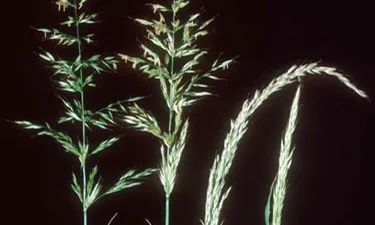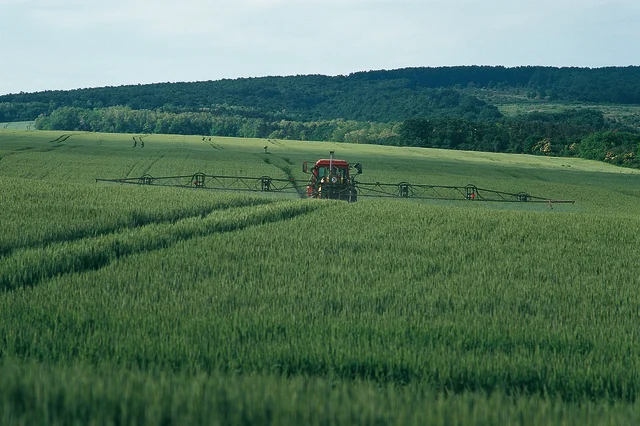Published on 19th December 2016
Weed Management
Couch - Weed Management

Couch grasses owe their success to their ability to spread by means of horizontal stems growing through the soil (rhizomes) or across the surface (stolons).
Couch grasses owe their success to their ability to spread by means of horizontal stems growing through the soil (rhizomes) or across the surface (stolons).
These stem structures, which may extend to several metres, act as storage organs for food reserves. Buds and adventitious roots are located along the length of these at frequent intervals. The majority of the buds remain dormant unless plants are disturbed (e.g. by cultivation) when new aerial shoots or rhizomes will arise from many of them. In uncropped land, rhizomes growth is greatest from May to November, with peak growth in June and July, although this may be disrupted by cultivations in cropping situations. More couch plants arise from seeds than is generally supposed, especially with black bent, although the chief means of propagation in arable land is by means of the creeping rhizomes or stolons, fragments of which can produce new plants. Non-inversion tillage, and especially direct drilling, greatly encourages couch as there is less disturbance to rhizomes and stolons than occurs with deeper cultivations.
Herbicide resistance
Only one case of evolved resistance to herbicides has been recorded in any species of couch worldwide - resistance to amitrole in creeping bent in pears in Belgium in 1986. Couch appears to have low risk of evolving herbicide-resistance – almost certainly because it is largely propagated vegetatively, rather than by seed.
Control – herbicides
In the UK, the introduction of glyphosate in autumn 1974 revolutionised the control of couch. Prior to that, the herbicides available were aminotriazole, atrazine, bromacil, chlorthiamid, dalapon, dichlobenil, EPTC, propyzamide, TCA and terbacil. None of these were as effective as glyphosate and most are no longer commercially available.
Pre-harvest applications of glyphosate are approved for use in wheat, barley and oats, combining peas, field beans, oilseed rape and linseed. Applications must be made no less than 7 – 14 days pre-harvest, depending on crop. Control of couch pre-harvest is dependent on adequate green leaf and favourable conditions. If couch is senescing due to hot/dry conditions, control is likely to be reduced due to inadequate translocation to the rhizomes.
The most effective post-harvest technique is to leave stubble uncultivated and allow couch to grow to 4-5 leaves, typically 10 – 15 cm high, before spraying with up to 1.44 kg a.i./ha of glyphosate. Cultivating prior to spraying reduces overall control as new plants are likely to emerge post-spraying from damaged fragments of rhizome.
Activity against couch is best when growing conditions are favourable – control is likely to be reduced if plants are wilting or cold or heat-stressed.
Although glyphosate is highly effective against couch, it is slow acting and complete kill may take several weeks, especially in cooler conditions.
Other herbicides that give selective control of couch within crops include propoxycarbazone-sodium (wheat) and propyzamide (various crops).
Non-chemical control
Use of glyphosate is much the best method of couch control. It is more effective, quicker and cheaper than non-chemical methods which may involve repeated cultivation of the soil, which is expensive, has a high energy requirement and is potentially damaging to soil structure. Non-chemical methods should only be adopted when glyphosate cannot be used, such as in organic systems.
Map couch patches in June/July and focus management on these areas.
The primary aim of cultural control is to damage the rhizomes (or stolons) as much as possible in order to exhaust their food reserves. Food reserves in fragmented rhizomes will decline until new growth has reached the 1 to 2 leaf stage, typically after 2 – 3 weeks, after which food reserves will increase again. Consequently, repeated cultivation, whenever new growth reaches 2 leaves, will progressively exhaust the food reserves and reduce couch infestations.
Repeated cultivations are necessary as a single cultivation can be worse than none, as it fragments the rhizomes, breaks the dormancy of buds, stimulates new growth and results in an increase in the number of individual plants. Ideally cultivations need repeating at least 3 times to achieve a reasonable degree of control.
Correct choice of cultivator is important. Rotary cultivators are much more effective at fragmenting couch rhizomes than tine cultivators. In an experiment set up in autumn 1968, but assessed a year later after a spring barley crop, a sequence of 3 rotary cultivations achieved 71% reduction whereas a similar sequence using rigid tine cultivators achieved only 44 – 56% reductions in couch rhizome dry weight.
Ploughing can reduce couch infestations but only if all parts of the weed are covered by at least 15 cm, and preferably 20 cm, of soil. This requires ploughing to a depth of at least 30 cm and the use of efficient skimmers. Subsequent cultivations should be relatively shallow to avoid brining rhizomes back to the surface. Poor or shallow ploughing will achieve little and may distribute rhizomes throughout the plough depth making future control more difficult.
Desiccation of rhizomes has been used as a means of control. This may be achieved either by using tine cultivators to drag out rhizomes which are then left on the surface or, on heavy land, producing large dry clods in which rhizomes desiccate. Neither method is very effective unless hot, dry conditions persist for a long period.
Prevent importation of couch rhizomes or seed – many infestations originate from field margins where couch commonly occurs, so active headland management can prevent further ingress.
Avoid moving rhizomes on cultivation or harvesting equipment and try to prevent seed return, although this is a less important method of propagation than rhizomes.
Crop competition can enhance the control of couch weakened by burial or fragmentation. Seedlings of couch are more sensitive to crop competition than regenerating rhizome fragments. Couch is sensitive to shading and when continually shaded, tends to die out.
Perhaps surprisingly, given its biology and the fact that it is encouraged by non-inversion tillage, couch does not tend to persist in intensively managed grassland. A three-year grass ley can greatly reduce couch infestations, provided the grass is cut or grazed frequently.
In a survey published in 1910, Couch was reported to be the most problematic weed of arable crops in the UK, just ahead of charlock.
This situation continued right up until the mid-1970s due to the lack of effective herbicides and the limitations of cultivations as a means of control. This all changed with the introduction of glyphosate – a rare example of how a single highly effective herbicide can almost totally eliminate a major weed problem. Couch continues to be a problem on organic farms and in some perennial crop situations where it can be difficult to apply glyphosate without damaging the crop.
Dense infestations of Couch may produce several hundred heads/m2 reducing cereal yields by 25% or more.
High populations of plants can slow harvesting and the rhizomes interfere with cultivations and the harvesting of root crops by getting wrapped around equipment. Couch acts as alternative host to the cereal take-all fungus which can have implications for the value of break crops in cereal rotations and take-all decline.



